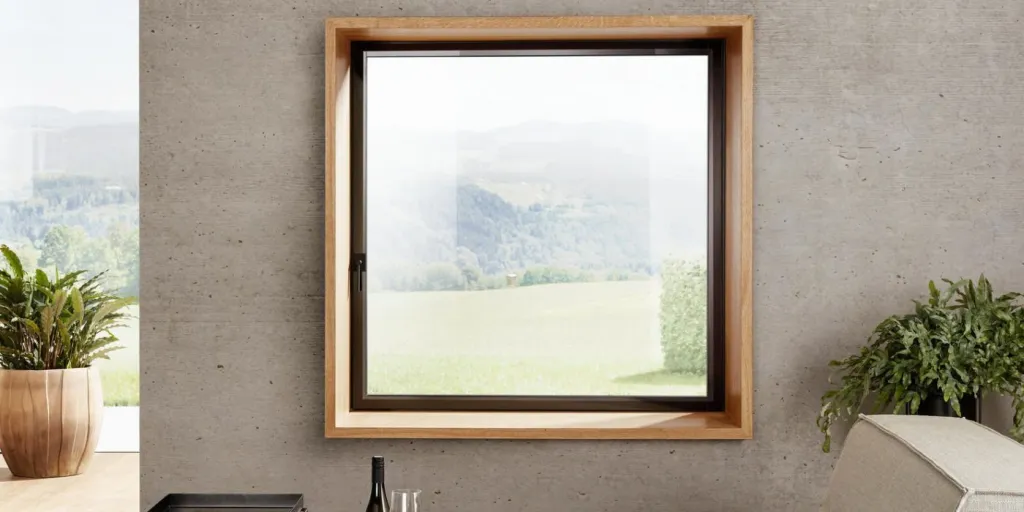Why Climate Drives Your Window Choice
Your windows fight the weather 24/7. In Chicagoland, that means ice storms, wind gusts, and humid heat. U-Factor = insulation power. SHGC = heat blocker. Choose wrong → drafts + big bills. Choose right → cozy home, lower costs, zero stress.
Know Your Climate Zone
Before we compare, here’s the deal on climate zones:
- Frigid climates: U-Factor ≤0.30 – thermal sovereignty.
- Arid/torrid zones: SHGC ≤0.25 – solar rejection.
- Humid regions: Non-porous composites – microbial exclusion.
- Temperate flux: Adaptive clad systems – seasonal equilibrium.
The International Residential Code (IRC) and ASHRAE climate zone map set the rules to help you pick windows that fit your region.
Window Material Showdown
Vinyl Windows: Budget-Friendly All-Stars
- Best For: Cost-conscious thermal performance.
- Why They Rock: Extruded PVC, multi-chamber insulation, enduring seal.
- The Catch: Palette restraint; thermal expansion in extreme heat.
- Real Talk: Vinyl’s a Chicagoland favorite because it laughs off cold winters and sticky summers.
Fiberglass Windows: Tough as Nails
- Best For: Durability in any climate.
- Why They Rock: Super strong, stable in wild temp swings, and can last 30–50 years.
- The Catch: Pricier upfront.
- Expert Tip: Pair fiberglass with Low-E triple-pane glass for top-tier, ENERGY STAR®-rated performance.
Wood Windows: Classic Charm
- Best For: Moderate climates, not our freeze-thaw cycles.
- Why They Rock: Authentic beauty, top insulation, endless finishes.
- The Catch: Humidity + neglect = costly repairs.
- Story: An Elgin family chose oak for their vintage home — loved the look, learned the upkeep schedule fast.
Aluminum Windows: Sleek but Chilly
- Best For: Arid minimalism or coastal contemporary.
- Why They Rock: Structural finesse, enduring finish.
- The Catch: Thermally unmitigated = conductive liability in cold/humid zones.
Composite Windows: The Best of Both Worlds
- Best For: Balanced performance in mixed climates.
- Why They Rock: Looks like wood, resists warping, energy-efficient, and built to last.
- The Catch: Mid-to-high price; quality depends on the brand.

Don’t Sleep on the Glass
The frame’s only half the story—your glass package is where the magic happens:
- Low-E emissivity – selective solar rejection.
- Multi-pane IGUs – inert gas strata, minimized conductance.
- Warm-edge technology – perimeter thermal continuity.
- ENERGY STAR® – climate-validated performance.
Climate-Specific Picks
Cold Climates (Zones 6–8)
- Materials: Fiberglass composites, vinyl extrusions, clad-wood systems.
- Configuration: Triple-pane, Low-E, krypton-enhanced IGUs.
- Metric: U-Factor ≤0.30 – thermal sovereignty in sub-zero conditions.
Hot Climates (Zones 0–3)
- Best Materials: Vinyl or fiberglass.
- Specs: Low SHGC (≤0.25) with reflective Low-E coatings.
- Priority: Block that solar heat.
Humid Climates
- Best Materials: Vinyl or fiberglass.
- Avoid: Exposed wood unless it’s clad.
- Priority: Mold and rot resistance.
Mixed Climates (Zones 4–5)
- Best Materials: Fiberglass or composite.
- Specs: Dual Low-E coatings for heating and cooling.
- Priority: Balance U-Factor and SHGC.

Condensation 101
Condensation can be a red flag—or not:
- Inside Condensation: Usually from high indoor humidity. Triple-pane Low-E glass can fix it.
- Outside Condensation: Common in humid areas and actually means your windows are insulating well.
Pro Tips Before You Buy
- Go Pro for Install: Even the best windows flop with a bad fit.
- Think Long Game: Weigh upfront costs against years of savings and durability.
- Check Labels: Look for ENERGY STAR® and NFRC ratings to confirm climate-ready efficiency.
- Match Your Lifestyle: Want easy upkeep? Pick vinyl or fiberglass. Love that authentic look? Go wood, but prep for maintenance.
The Final Word
No single window material rules them all—it depends on your climate, style, and budget:
- Vinyl – budget + efficiency combo.
- Fiberglass – lasts forever, any weather.
- Wood – beauty with upkeep.
- Aluminum – style over substance.
- Composite – balanced, low-fuss upgrade.
👉 Not sure what’s best for your home? WarmDreams’ Chicagoland experts can guide you to energy-efficient, long-lasting windows tailored to your climate and style. Book your free consultation today!
FAQs: Your Window Material Questions Answered
What’s the most energy-efficient window material?
Are wood windows a bad call in humid climates?
How long do vinyl windows last?
Do aluminum windows work in Chicago?
What matters more: frame or glass?
Recent Posts
- Best Window Company Near Me & the Average Cost of New Windows
- Illinois Window & Door Manufacturers: Complete Guide for Homeowners & Contractors
- Free & Affordable Window Replacement in Illinois (2025–2026)
- WarmDreams Windows & Doors Earns BBB Accreditation
- DIY vs Professional Window Installation: What’s the Best Choice for Your Home?

